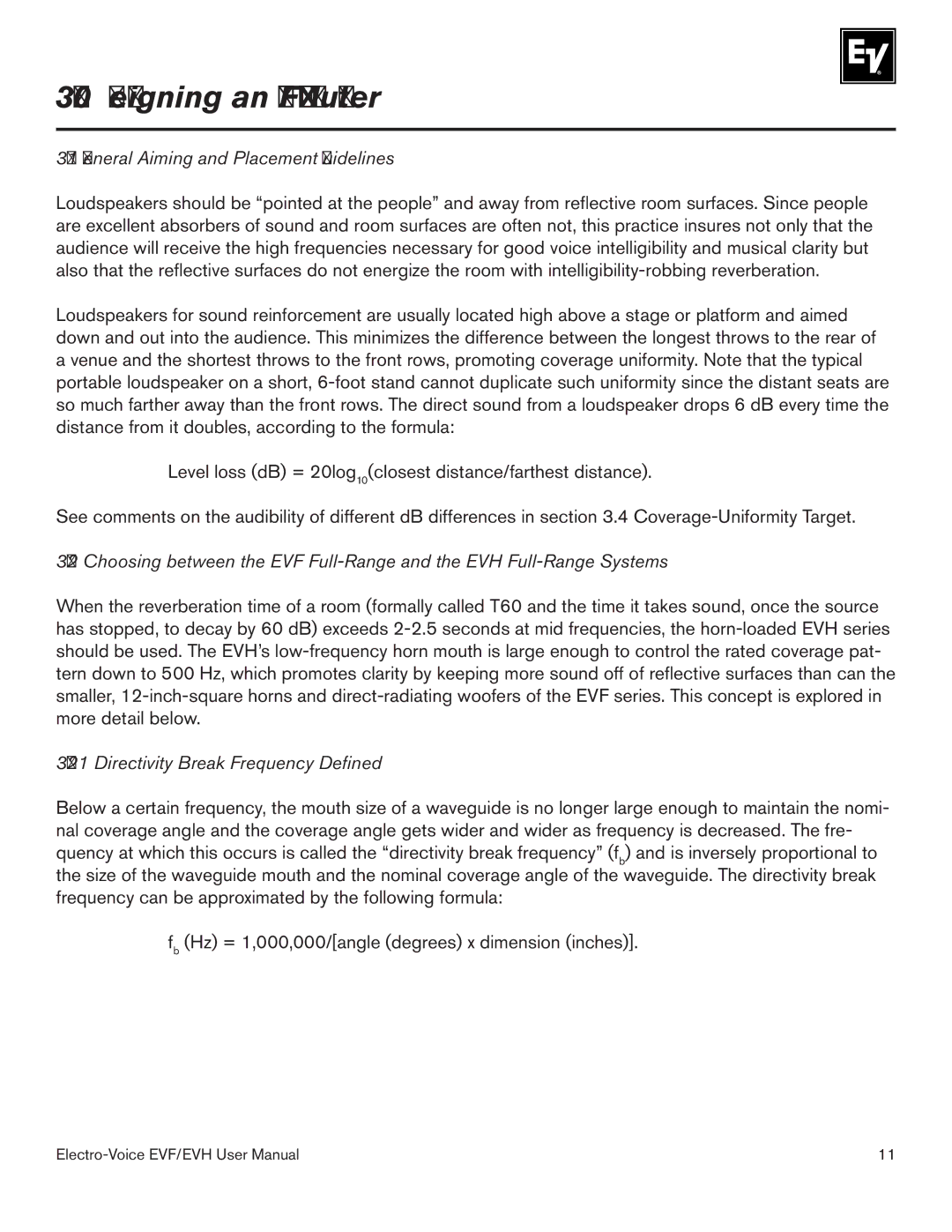EVH-1152S, EVF-1152S, EVF-1122S, EVF-1122D, EVF-1152D specifications
Electro-Voice is renowned for its high-quality audio solutions, and the EVF series embodies this commitment. The EVF-2121S, EVF-1121S, EVF-1181S, EVF-1151S, and EVF-2151D are a collection of loudspeakers designed for a variety of professional audio applications, each with its distinctive features and capabilities that cater to different sound reinforcement needs.The EVF-2121S is a dual-12-inch full-range speaker that combines exceptional power handling with a wide frequency response. It utilizes a coaxial driver arrangement, providing even sound distribution and a cohesive audio experience. This model is ideal for medium to large venues, offering a robust SPL (sound pressure level) output and clear reproduction of vocals and instruments.
In contrast, the EVF-1121S features a single 12-inch driver, delivering precise, high-impact sound suitable for smaller spaces. Its design emphasizes clarity and detail, making it perfect for live sound applications. The compact and lightweight design also ensures ease of transport and installation, appealing to mobile sound reinforcement professionals.
The EVF-1181S is a dedicated subwoofer that amplifies low frequencies, featuring an 18-inch woofer for deep, powerful bass response. Its extended low-frequency output enhances the overall sound experience, making it an ideal choice for high-energy music events and professional club environments. Designed with rugged construction and efficient power handling, the EVF-1181S is built to withstand demanding conditions while delivering reliable performance.
The EVF-1151S combines a 15-inch woofer with an advanced high-frequency driver for a full-range sound that works well in theatres, concert halls, and corporate events. The speaker ensures clear mid and high frequencies, maintaining vocal intelligibility even in challenging acoustic environments.
Lastly, the EVF-2151D is a dual 15-inch subwoofer that enhances overall system performance with its ability to produce deep bass. Its compact enclosure design allows for seamless integration into various sound setups, ensuring it can meet the needs of both portable and installed sound systems.
All models in the EVF series incorporate advanced technologies, including proprietary transducers and custom-engineered waveguides, which contribute to their impressive performance. With features like durable enclosures and efficient power handling, these loudspeakers are engineered to provide reliable sound reinforcement for both live and recorded applications. Whether it’s a concert, event, or installation project, the Electro-Voice EVF series stands out for its versatility and audio excellence.

